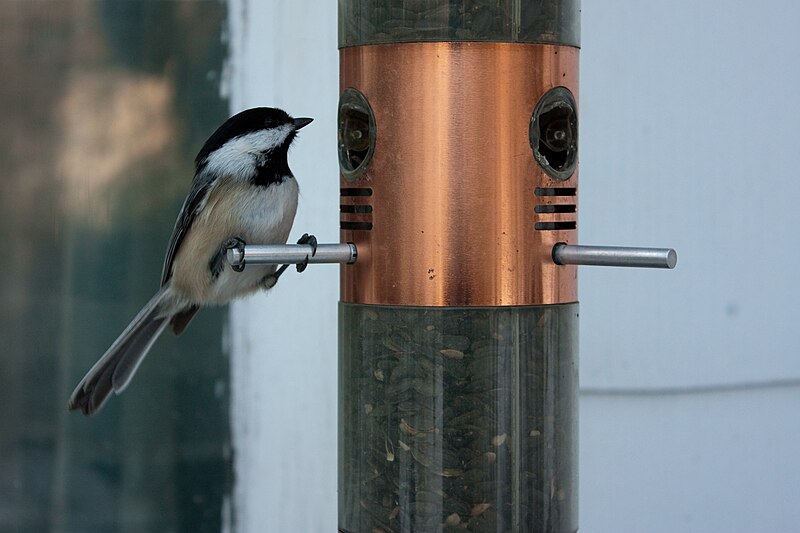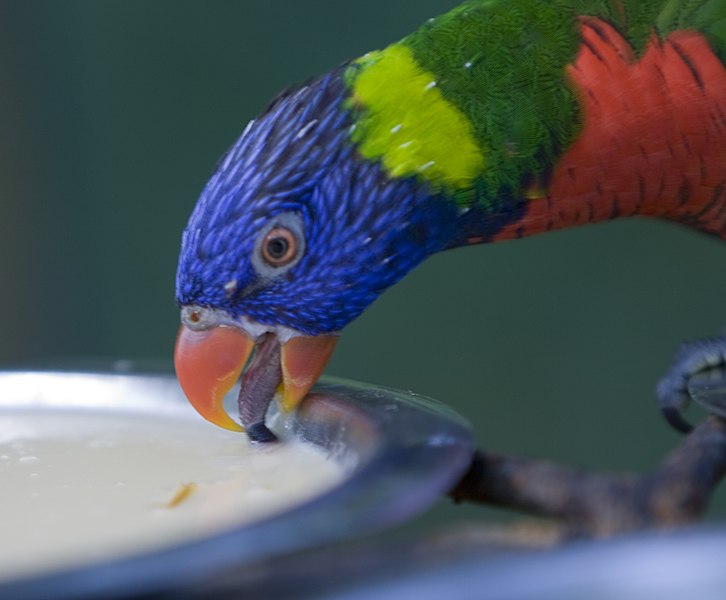The number of veterinarians experienced in avian medicine is growing by leaps and bounds, as are advances in the field itself. Today, most folks keeping parrots, finches, budgies, canaries, cockatiels, quails and even such exotics as turacos and toucans are within reach of competent medical advice. Read More »
Category Archives: Bird Health
Feed SubscriptionFreeze Dried Mealworms – a Healthy, Convenient Food for Wild and Pet Birds
As I write this from NYC it is not yet officially winter, but I’m looking out over waist-high snow drifts. So I’m inspired to consider a special treat for the visitors to my bird feeders, and one which finches, softbills and other pets relish as well – mealworms.
The Importance of Insects
A bag of Freeze Dried Mealworms is a very useful item for both pet keepers and wild bird enthusiasts to have on hand. Providing both calcium and much-needed protein, insects continue to figure in the diets of many birds even during the coldest months. Although not visible to us, insects are always about – some species hibernate, while others pass the winter as eggs or pupae. These are avidly sought by many typical feeder visitors, but especially Woodpeckers, Chickadees, Nuthatches, Blue Jays and Juncos. Insects become especially important in late winter, when female birds need to increase their calcium stores in preparation for egg-laying.
Read More »
Wild Bird Feeding Extras – Grit, Calcium, Salt and Water – Part 2
 In Part 1 of this article we looked at a few nutrients that wild birds are hard-pressed to find in winter. Today we’ll continue with some other ideas that might make life easier for your avian friends. Read More »
In Part 1 of this article we looked at a few nutrients that wild birds are hard-pressed to find in winter. Today we’ll continue with some other ideas that might make life easier for your avian friends. Read More »
Salmonellosis – Salmonella or Paratyphoid Infection in Pet Birds
Pet reptiles have long been recognized as potential carriers of Salmonella. Less well known is the fact that almost any animal, including parrots, finches, doves and other cage birds, can also harbor and transmit this troublesome bacterium.
Salmonella Transmission
Pet birds most commonly contact Salmonella from food and water contaminated with the bacteria, but in crowded conditions may also inhale airborne organisms shed in nasal secretions or feather dander. In outdoor aviaries, wild birds (especially pigeons in urban environments) rats, and mice are the usual culprits in a Salmonella outbreak.
 When I first began working at the Bronx Zoo, I was baffled by continued flare-ups of Salmonellosis among birds which had been cleared of the disease and were housed in isolation. It was later discovered that roaches and flies, which are particularly difficult to control in zoo holding areas, can spread Salmonella in their droppings as they travel from cage to cage.
When I first began working at the Bronx Zoo, I was baffled by continued flare-ups of Salmonellosis among birds which had been cleared of the disease and were housed in isolation. It was later discovered that roaches and flies, which are particularly difficult to control in zoo holding areas, can spread Salmonella in their droppings as they travel from cage to cage.
Symptoms
Depending upon the species (over 2,000 have been identified) and concentration of the bacteria, infected birds may exhibit no symptoms at all, especially if otherwise in good health. However, birds with mild (termed “sub-clinical”) infections are able to pass Salmonella to other animals and people, and may themselves become very ill if their immune systems weaken due to stress or other health problems.
Typical symptoms of Salmonellosis include weight loss, lethargy, diarrhea and, in some cases, mucus discharge, dermatitis, excessive thirst and the passing of yellow-green feces. Lories and African Gray Parrots appear to be especially susceptible to attack by Salmonella.
The disease is diagnosed via fecal tests; identification of the exact species involved is important, as certain species or strains require specific antibiotics, and do not respond to standard treatments.
Salmonellosis in People
 Salmonellosis is particularly dangerous to infants and elderly or immune compromised individuals, but even healthy adults should take proper precautions when working around animals of any type (please see article referenced below).
Salmonellosis is particularly dangerous to infants and elderly or immune compromised individuals, but even healthy adults should take proper precautions when working around animals of any type (please see article referenced below).
The overwhelming majority of aviculturists have little to fear from Salmonella, as it is not common in pet species…as always, knowledge and sound husbandry is the best way to safeguard your health and that of your pets.
Further Reading
The American Veterinary Medical Association’s Salmonella prevention guidelines are posted here. They refer to reptiles, but are applicable to birds.
An interesting study on Salmonella in parrots and other birds is posted here.
Cockroach image referenced from wikipedia and originally posted by Wm Jas to FlickR
Lorikeet drinking image referenced from wikipedia and originally posted by Mats Lindh to FlickR
Grit, Calcium, Salt and Water – Wild Bird Feeding “Extras” – Part 1
While any food provided to wild birds is beneficial, there are a few items that are very important to their health, especially in the winter, but which are often over-looked by well-meaning avian enthusiasts.
Grit
Pigeons, Doves and many other birds must swallow small stones, sand and similar materials (“grit”) in order to break down seed coats and other foods before digestion can take place. Grit is often in short supply during the winter, being either covered with snow or frozen to the ground (in NYC, I’ve observed English sparrows on buildings, pecking at gravel within brick mortar).
You can help winter birds along by providing pet bird gravel, sand and oyster shell (available at garden supply shops) in snow-free locations. It is best to keep grit separated from food, as it will be used slowly and may become contaminated with feces if it lies out too long.
Calcium
Calcium is especially important as winter turns to spring, since female birds utilize this mineral to produce egg shells. However, insects, the main source of calcium for many species, are often scarce at this time of the year. Our Wild Bird Mealworms will be most appreciated by nearly every bird that visits your feeder. You can also supply calcium by mixing oyster shell and ground-up eggshells into your wild bird food.
Food and Shelter
Of course, food and shelter are important concerns year-round. Please be sure to check out our extensive line of bird and wildlife foods, houses and feeders.
Next time we’ll cover a few additional winter-feeding essentials.
Further Reading
Winter is a great time to try your luck at hand-feeding wild birds. Please see Hand Taming Wild Birds for more details.
Woodpeckers, chickadees and other acrobatic birds will put on quite a show if given the chance – please check out Feeding Woodpeckers and Other Avian Athletes for details.
 That Bird Blog – Bird Care and History for Pet Birds
That Bird Blog – Bird Care and History for Pet Birds
